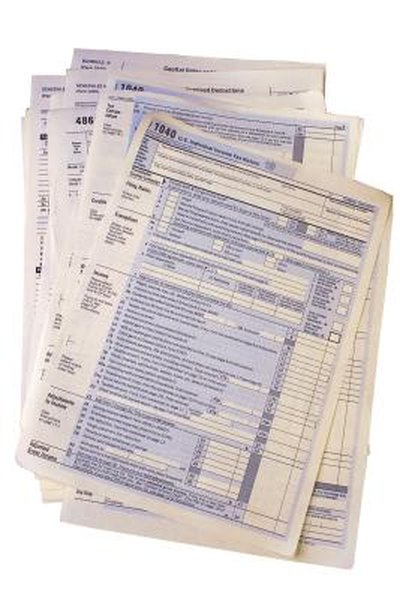How to Claim Investment Losses When You Sell Mutual Funds
Reporting mutual fund losses adds a couple of forms to your tax return.
Comstock/Comstock/Getty Images
If you sold mutual fund shares at a loss, that loss is reported using the capital gains and losses section and forms of your Form 1040 tax return. Losses are reported for the year in which you sold the fund shares. The biggest challenge when reporting mutual fund sales is determining your cost basis. Multiple investments into a fund account, plus reinvested dividends and capital gains, all affect the final amount of your losses.
Select a cost basis method to use when reporting your mutual fund sales. The choices are designating specific shares, first-in-first-out -- FIFO -- or average cost basis. Average cost basis is the simplest for calculations and paperwork. One of the other two options -- designating shares or FIFO -- should be selected only if you have a compelling reason to do so. Also, the mutual fund company will provide the cost basis numbers for the shares that you sold.
Step 2Determine the number of sold shares that were long-term investments -- owned for longer than one year -- and short-term investments -- held for a year or less. If you have been making regular investments or reinvesting dividends, you will probably have some of each. For a partial sale of your fund account, the tax rules assume you sold the oldest shares first.
Step 3Complete the IRA Form 8949, Sales and Other Dispositions of Capital Assets, separating your short and long-term mutual fund sales into the two sections of the form. If you are using the average cost method for your basis, use a single line to report the sale of a specific mutual fund. The Form 8949 instructions state that if you have multiple purchase dates for a single investment, you can put "various" in the date-acquired block.
Step 4Transfer the totals from your Form 8949 to the appropriate sections of the Schedule D form and complete the Schedule D. This form consolidates and offsets your long and short-term gains and/or losses to provide net gain or loss results that will be reported on your Form 1040 tax return.
References
Tips
- All of your investment sales for a capital gain or loss go on the Form 8949 and then to the Schedule D.
- Capital losses are used first to offset any capital gains for the year. If your mutual fund losses are greater than any investment gain you realized, excess losses become a tax write-off against your other income.
- A maximum of $3,000 in excess capital gains losses can be claimed for a single tax year. Losses greater than $3,000 will be carried forward to future tax years.
Writer Bio
Tim Plaehn has been writing financial, investment and trading articles and blogs since 2007. His work has appeared online at Seeking Alpha, Marketwatch.com and various other websites. Plaehn has a bachelor's degree in mathematics from the U.S. Air Force Academy.

